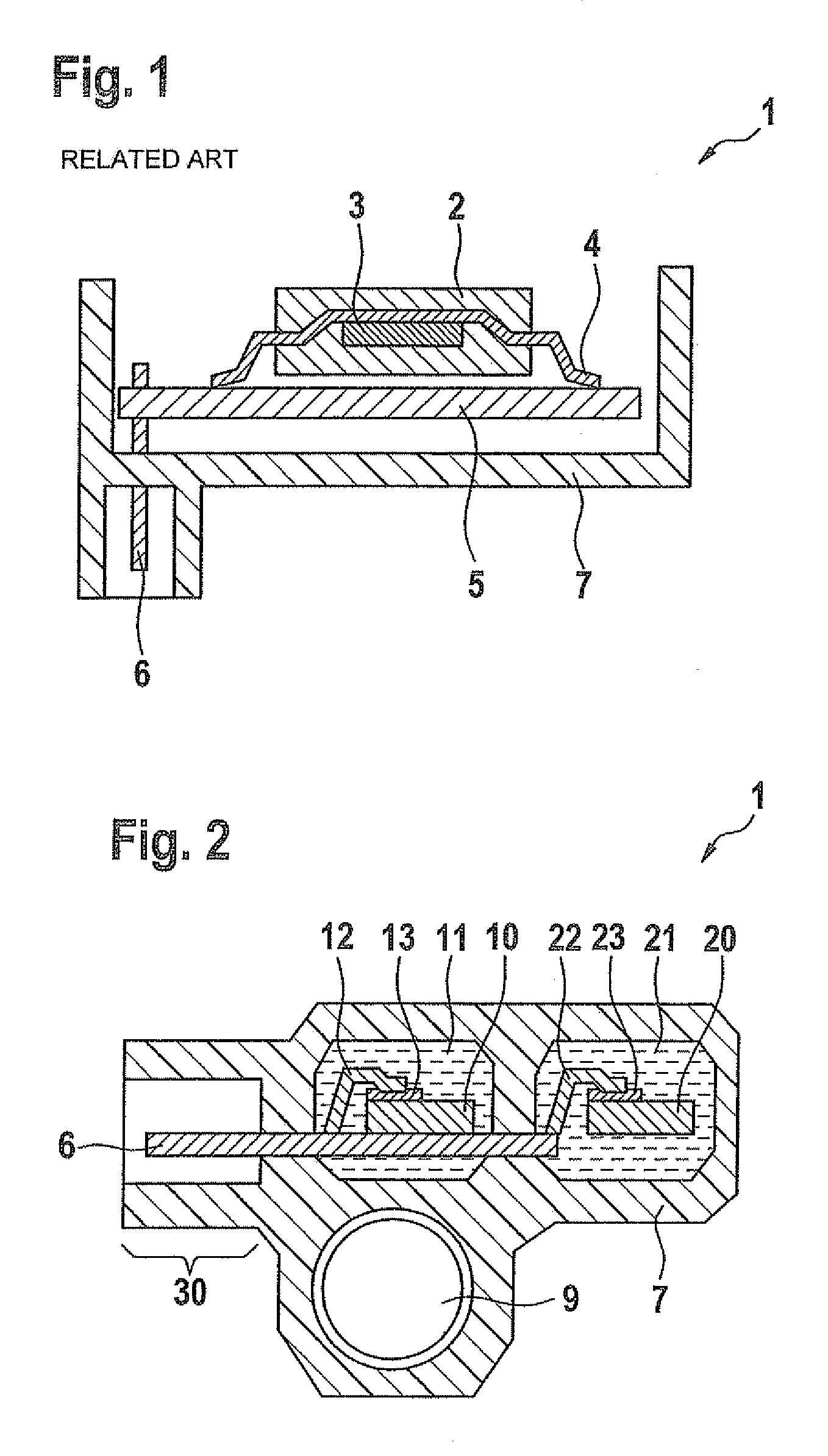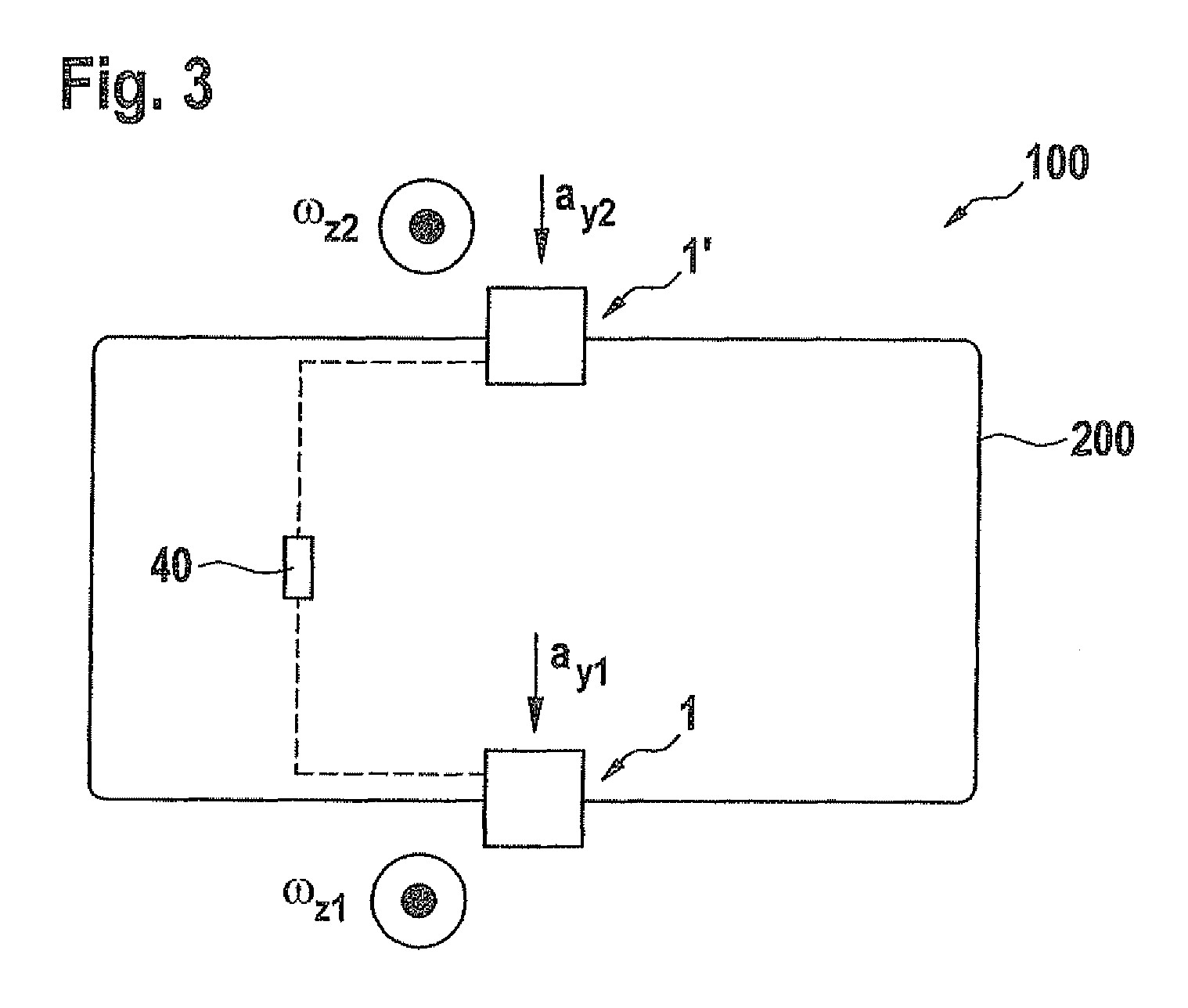Inertial sensor cluster and sensor system
a sensor cluster and sensor technology, applied in the field of sensor devices, can solve the problems of disadvantageously large installation space and relatively high manufacturing cost, and achieve the effect of flexible use, flexible positioning, and particularly flexible and comfortable us
- Summary
- Abstract
- Description
- Claims
- Application Information
AI Technical Summary
Benefits of technology
Problems solved by technology
Method used
Image
Examples
Embodiment Construction
[0021]FIG. 1 schematically shows a cross section of a sensor device 1 according to the related art, sensor device 1 including a sensor module 2 having a sensor element 3, sensor module 2 being situated on a printed board 5, sensor module 2 being electrically conductively connected to printed board 5 via a connecting element 4, e.g., a carrier strip, printed board 5 being electrically conductively connected to a contact element 6 and being fixed on an outer casing 7. Outer casing 7 includes sensor module 2 at least partially or preferably entirely, so that adequate protection of sensor module 2 is ensured. Contact element 6 usually includes multiple connection pins for supplying sensor module 2 with power and for reading out the measuring signals. Furthermore, contact element 6 is accessible at least partially from the outside and allows a conventional plug to be connected, for example.
[0022]FIG. 2 schematically shows a cross section of a preferred specific embodiment of sensor devic...
PUM
 Login to View More
Login to View More Abstract
Description
Claims
Application Information
 Login to View More
Login to View More - R&D
- Intellectual Property
- Life Sciences
- Materials
- Tech Scout
- Unparalleled Data Quality
- Higher Quality Content
- 60% Fewer Hallucinations
Browse by: Latest US Patents, China's latest patents, Technical Efficacy Thesaurus, Application Domain, Technology Topic, Popular Technical Reports.
© 2025 PatSnap. All rights reserved.Legal|Privacy policy|Modern Slavery Act Transparency Statement|Sitemap|About US| Contact US: help@patsnap.com



